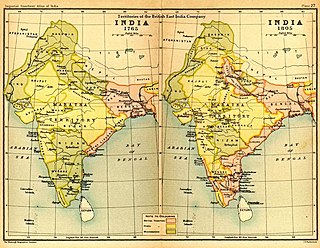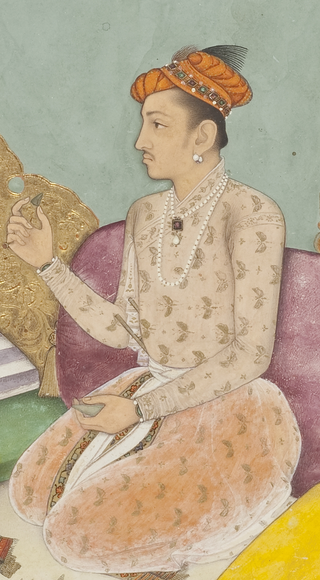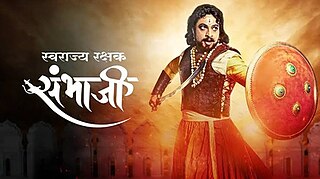
Tanhaji Malusare was a warrior and commander of Shivaji. A local poet Tulsidas, wrote a powada describing Subhedar Tanhaji's heroics and sacrifice of life in the Battle of Sinhagad, which has since made him a popular figure in Indian folklore.

Baji Prabhu Deshpande was a general of the Maratha Army. He is known for his role in the Battle of Pavan Khind at Ghod Khind, where he sacrificed his life defending Shivaji from incoming Adil Shahi forces of Siddi Johar. He also was a landlord or Vatandar in the Maval region.
Netoji Palkar (1620–1681), also known as Netaji Palkar, served as a prominent Maratha general and held the esteemed position of the 3rd Senapati of the Maratha Army under the leadership of Chhatrapati Shivaji, the visionary founder of the Maratha empire.

Sinhagad is an ancient hill fortress located at around 49 km southwest of the city of Pune, India.
Chandraseniya Kayastha Prabhu (CKP) or historically and commonly known as Chandraseniya Prabhu or just Prabhu is an ethnic group mainly found in Gujarat and Maharashtra. Historically, they made equally good warriors, statesmen as well as writers. They held the posts such as Deshpande and Gadkari according to the historian, B.R. Sunthankar, produced some of the best warriors in Maharashtrian history.

The Maratha Conquests were a series of conquests in the Indian subcontinent which led to the building of the Maratha Empire. These conquests were started by Shivaji in 1659, from the victory at the Battle of Pratapgad against Bijapur. The expansion of the empire was limited and interrupted by the Mughal conquests of south India by Mughal ruler Aurangzeb until he eventually died in 1707 in Deccan itself. Marathas were forced to defend their territories against the overwhelmingly strong Mughal army in the 27 years long Deccan wars. They were able to defend their territories and gain an upper hand over Mughals in the sustained conflict.

The Battle of Sinhagad, also known as Battle of Kondhana, involved an attack by the forces of the Maratha Empire during the night of 4 February 1670 on the fort of Sinhagad, near the city of Pune, Maharashtra. The Marathas captured the fort.

Mirza Raja Jai Singh I was the senior most general and a high ranking mansabdar at the imperial court of Mughal Empire as well as the Kachwaha ruler of the Kingdom of Amber. His predecessor was his grand uncle, Mirza Raja Bhau Singh, the younger son of Mirza Raja Man Singh I.

Rajgad is a Hill region fort situated in the Pune district of Maharashtra, India. Formerly known as Murumbdev, the fort was the first capital of the Maratha Empire under the rule of Chhatrapati Shivaji for almost 26 years, after which the capital was moved to the Raigad Fort. Treasures discovered from an adjacent fort called Torna were used to completely build and fortify the Rajgad Fort.

Torna Fort, also known as Prachanda gad, is a large fort located in Pune district, in the Indian state of Maharashtra. It is historically significant because it was the first fort captured by Shivaji I in 1646, at the age of 16. The hill has an elevation of 1,403 metres (4,603 ft) above sea level, making it the highest hill-fort in the district. The name derives from Prachanda and gad.

Ramchandra Neelkanth Bawadekar (1650–1716), also known as Ramchandra Pant Amatya, served on the Council of 8 as the Finance Minister (Amatya) to Emperor (Chhatrapati) Shivaji, dating from 1674 to 1680. He then served as the Imperial Regent to four later emperors, namely Sambhaji, Rajaram, Shivaji II and Sambhaji II. He authored the Adnyapatra, a famous code of civil and military administration, and is renowned as one of the greatest civil administrators, political thinkers, diplomats and military strategists of the Maratha Empire.

Purandar Fort is a mountain fort in Pune district in Western Indian state of Maharashtra, India. The fort stands at 1,374 metres (4,508 ft) above the sea level in the Western Ghats, 50 kilometres (31 mi) to the southeast of Pune.
Bapuji Mudgal Deshpande was a general who served Chhatrapati Shivaji Maharaj.

Rohida fort / Vichitragad Fort is a fort located 10 km from Bhor, Pune district, of Maharashtra. This fort is an important fort in Pune district. The fort restoration is done by the Shree Shivdurga Samvardhan committee with the help of forest dept. and local villagers.

The Battle of Purandar was fought between the Mughal Empire and the Maratha Empire in 1665.
Diler Khan Daudzai was a Mughal general who served under Aurangzeb and was the governor of Awadh. He was born in India, and was son of Nawab Darya Khan Rohilla, a Rohilla Pathan who traced his descent to the Pashtun Daudzai tribe, and a mansabdar who served under the Indian Muslim Mir Bakhshi, Shaikh Farid Bukhari in 1603. He is known to battle and kill Murarbaji, the military general of Shivaji and the in-charge of Purandar Forts.
The Prabhu communities are a group of related Hindu castes found in Maharashtra, India. There are four such castes, all having different ritual and social status within the caste system of Maharashtra. They are Chandraseniya Kayastha Prabhu, Pathare Prabhu, Kanchole Prabhus and the Danved Prabhu.

Swarajyarakshak Sambhaji is an Indian historical drama based on the life of warrior king Sambhaji. The series is directed by Vivek Deshpande and Kartik Rajaram Kendhe and is written by Pratap Gangavane. It is produced abd starred by Amol Kolhe in lead role of Sambhaji, Vilas Sawant and Sonali Ghanashyam Rao under the banner of Jagadamb Creations. It premiered from 24 September 2017 by replacing Kahe Diya Pardes and aired on Zee Marathi.

Raja Shivchatrapati is a Marathi historical TV drama based on Chhatrapati Shivaji Maharaj, founder of the Maratha Empire. The serial was re-broadcast in April 2020 during the COVID-19 pandemic.

Pawankhind ; is a 2022 Indian Marathi-language historical action drama film directed by Digpal Lanjekar and produced under the banner of Almonds Creations in association with AA Films. The film based on the life of Maratha warrior, Baji Prabhu Deshpande, stars Chinmay Mandlekar, Mrinal Kulkarni, Ajay Purkar, Sameer Dharmadhikari, along with Ankit Mohan, Prajakta Mali and Kshitee Jog in supporting roles.















